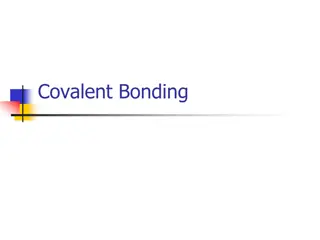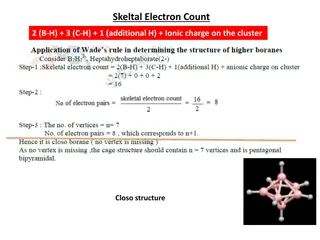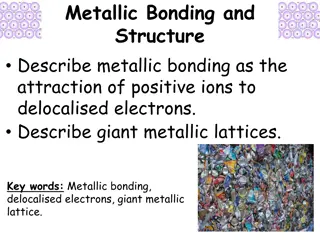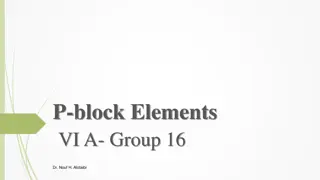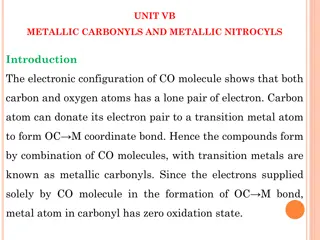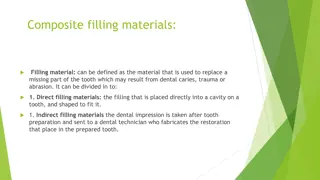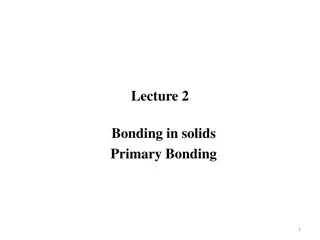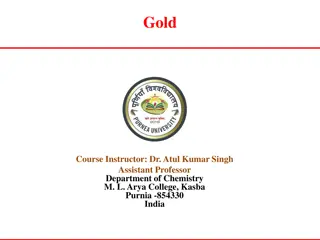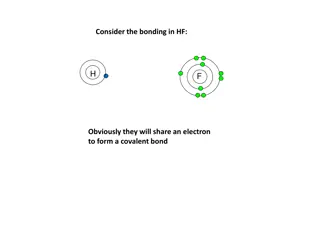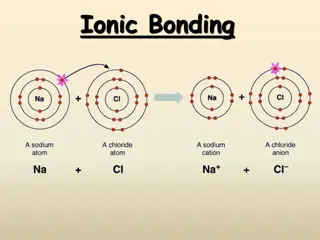Understanding Metallic Bonding and Its Properties
Metallic bonding involves the delocalization of electrons among metal atoms, creating a unique structure known as the electron sea. This structure allows for properties such as high melting points, conductivity of heat and electricity, malleability, and ductility. Metals are able to conduct heat and electricity due to the freedom of movement of electrons within the lattice structure. The non-directional nature of metallic bonds results in metals being malleable and ductile rather than brittle. Additionally, metals exhibit high melting points, indicating strong metallic bonding forces.
Download Presentation

Please find below an Image/Link to download the presentation.
The content on the website is provided AS IS for your information and personal use only. It may not be sold, licensed, or shared on other websites without obtaining consent from the author. Download presentation by click this link. If you encounter any issues during the download, it is possible that the publisher has removed the file from their server.
E N D
Presentation Transcript
Metallic Bonds Properties e-are delocalized among metal atoms Bond Formation 2 Metals Occurs Between Type of Structure Electron Sea Solid Physical State Very High Melting Point No Soluble in Water Yes Electrical Conductivity Malleable, Ductile, Lustrous Other Properties
Type of Structure Electron Sea
Conduction of Heat Electrons are able to gain kinetic energy in hotter areas of the metal and are able to quickly transfer it to other parts of the metal lattice because of their freedom of movement. Heat causes the electrons to move faster and the bumping of these electrons with each other and the protons transfers the heat.
Conducts Electricity When an electric field is applied to a metal, one end of the metal becomes positive and the other becomes negative. Since the electrons are free to move, all the electrons experience a force toward the positive end. The movement of electrons is an electric current.
Malleable and Ductile Metals are malleable and ductile, rather than brittle, as a result of the non-directional nature of metallic bonds. The attractive forces exerted by the positive metal ions for the mobile electrons occur in all directions. This means that layers of atoms can move past one another without disrupting the force between the positive ions and the negative sea of electrons.
Malleable and Ductile + + + + + + Force + + + + + +
Malleable and Ductile Mobile e- s allow atoms to slide by like ball bearings in oil. + + + + + + + + Force + + + +
High Melting Point The generally high melting points indicate that metallic bonding is quite strong. Melting points increase with an increase in the number of valence electrons to the sea, since there is a greater attractive force between the cations and the electrons.
High Density Most metals have relatively high densities because metallic lattices are close-packed.
Structure of Metals Electrostatic forces of attraction between the positively charged cations and the negatively charged electrons hold the lattice together. A metal is therefore a seen as a rigid framework of cations immersed in a sea of electrons that serve as the cement holding the three-dimensional cationic network together Metallic bonding.









